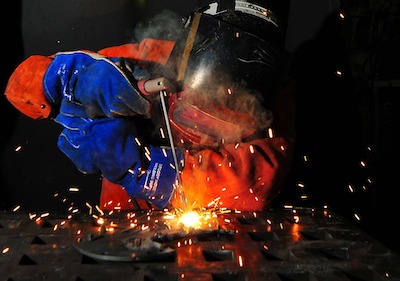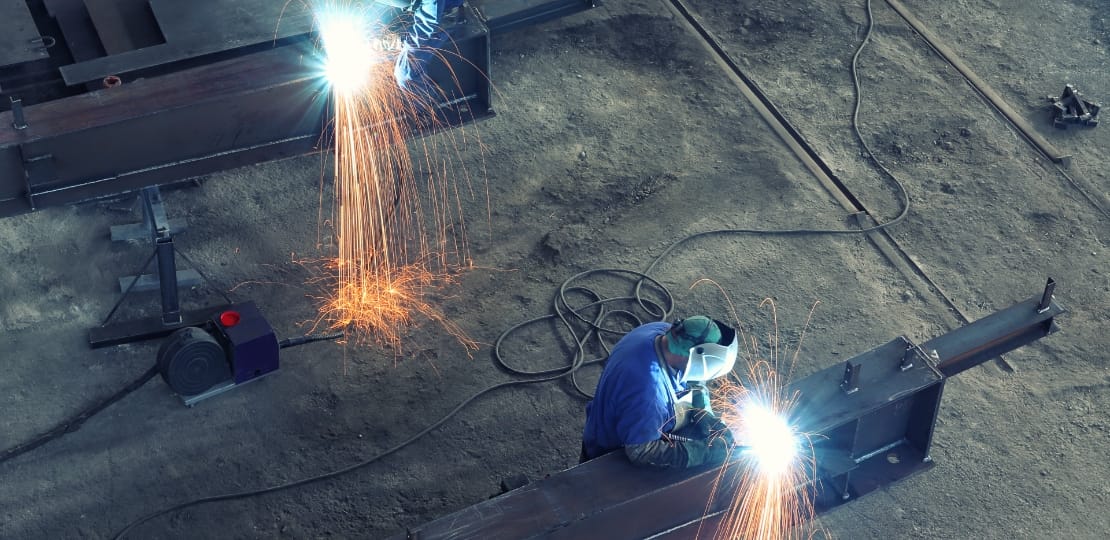Usual Welding Repair Issues and Just How to Address Them Successfully
Welding repairs typically experience a range of problems that can endanger the integrity of the final item. Usual troubles consist of inadequate penetration, porosity, and misalignment, to name a few. Each issue presents unique challenges that require certain techniques for resolution. Recognizing these problems is important for welders intending to improve their abilities and results. This discussion will certainly explore these typical welding repair service concerns and efficient approaches to address them.
Inadequate Penetration
Poor infiltration occurs when the weld steel fails to completely fuse with the base product, resulting in weak joints and possible architectural failings. This problem commonly originates from not enough warmth input, incorrect electrode angle, or inappropriate welding rate. Welders may run into inadequate infiltration due to a miscalculation of the needed specifications for a details material density or type. In addition, contamination on the base product's surface can prevent effective bonding, intensifying the problem. To deal with poor penetration, welders ought to ensure suitable setups on their devices and keep a clean work surface. Routine inspection of welds is suggested to recognize any kind of deficiencies early, enabling prompt improvements and the prevention of compromised architectural honesty in bonded settings up.
Porosity
Porosity is a common issue in bonded joints that materializes as little gas bubbles trapped within the weld steel. This defect can compromise the honesty of the weld, causing decreased toughness and prospective failure under stress. Montana Mobile Welding and Repair. Porosity typically develops from contamination, dampness, or inappropriate welding methods, which enable gases to run away into the liquified weld swimming pool. To resolve porosity, welders need to ensure appropriate surface prep work, keep a clean working environment, and use appropriate welding criteria. In addition, choosing the ideal filler product and securing gas can reduce gas entrapment. Regular examination and screening of welds can assist identify porosity early, assuring prompt restorative actions are taken, thereby maintaining the high quality and dependability of the welded framework
Misalignment
Imbalance in welding can develop from different factors, including inappropriate configuration and thermal growth. Recognizing the source is essential for reliable resolution. A number of modification methods are readily available to realign parts and guarantee structural integrity.
Root causes of Misalignment
Welding imbalance commonly comes from a selection of underlying problems that can endanger architectural honesty. One key cause is inappropriate fit-up of elements prior to welding, which can bring about voids and unequal surfaces. Variations in thermal development during the welding procedure can also lead to distortion, specifically if the products being joined have various coefficients of growth. In addition, inadequate fixturing and securing might stop working to hold components safely in location, causing activity during welding. Inadequately kept tools, consisting of welding devices and tools, might present disparities in the weld bead, further contributing to imbalance. Finally, operator error, stemming from insufficient training or experience, can additionally play a substantial function in developing misaligned welds.
Modification Strategies Readily Available
Resolving imbalance properly calls for a combination of restorative strategies tailored to the specific problems handy. One usual technique is using jigs or components to hold components in the proper setting throughout welding, making sure consistent alignment. Furthermore, preheating the products can help lower distortion and boost fit-up. For significant imbalance, mechanical adjustment techniques, such as utilizing hydraulic jacks or clamps, can be used to fix the placement before welding. Post-weld warm therapy may likewise be necessary to ease anxieties triggered by misalignment. Finally, careful examination and change throughout the setup phase can protect against imbalance issues from ending up being significant problems, promoting a smoother welding process and boosting overall architectural stability.
Distortion
Distortion is a common obstacle in welding that can occur from various aspects, including irregular heating & cooling. Understanding the root causes of distortion is important for implementing reliable avoidance methods. Resolving this problem not only boosts structural integrity yet additionally boosts the overall top quality of the weld.
Root causes of Distortion
When based on the extreme warm of welding, materials often go through changes that can result in distortion. This sensation largely occurs from thermal growth and tightening during the welding procedure. As the weld location warms up, the product expands; upon air conditioning, it gets, which can produce inner tensions. Furthermore, uneven home heating throughout a workpiece can intensify these tensions, causing warping or bending. The kind of product also plays a substantial function; steels with differing thermal conductivity and coefficients of development may react in a different way, bring about uncertain distortions. Inadequate joint style and poor fixturing can add to misalignment during welding, boosting the probability of distortion. Understanding these reasons is essential for reliable welding repair service and avoidance methods.
Avoidance Techniques
Reliable avoidance techniques for distortion during welding concentrate on controlling warmth input and making certain appropriate joint design. Keeping a constant warm input aids to decrease thermal expansion and contraction, which can result in distortion. Using strategies such as preheating the workpiece can also decrease the temperature click to find out more slope, advertising consistent home heating. Furthermore, selecting proper joint styles, such as T-joints or lap joints, can improve stability and lower tension concentrations. Implementing proper fixturing to secure the workpieces in position even more aids in maintaining positioning during the welding procedure. Finally, staggered welding sequences can distribute warm much more equally, protecting against localized distortion. By applying these techniques, welders can considerably lower the likelihood of distortion and boost the overall top quality of their welds.
Splitting
Splitting is a typical issue encountered in welding fixings, frequently arising from different aspects such as improper air conditioning prices, material choice, or inadequate joint preparation. The event of splits can significantly jeopardize the integrity of the weld, resulting in potential failings during operation. To resolve this concern, welders need to first assess the origin triggers, ensuring that materials are compatible and suitably selected for the certain application. Furthermore, managing the cooling rate throughout the welding process is important; fast cooling can induce stress and anxiety and lead to splitting. Proper joint design and prep work also contribute to minimizing the threat. Implementing these methods can boost weld quality and durability, ultimately decreasing the chance of cracking in ended up weldments.

Insufficient Combination
A substantial problem in welding repair services is incomplete fusion, which occurs when the weld steel does not properly bond with the base material or previous weld passes - Fabrication. This issue can result in weak points in the joint, possibly endangering the stability of the bonded structure. Variables adding to incomplete blend consist of insufficient heat input, incorrect welding strategy, and contamination of the surfaces being signed up with. To address this problem successfully, welders ought to guarantee correct pre-weld cleansing and surface area prep work, along with change their welding specifications to attain adequate infiltration and combination. Normal evaluation during the welding procedure can likewise assist recognize incomplete blend early, permitting prompt restorative actions to improve the site overall quality of the weld
Overheating
While welding repair services can enhance architectural integrity, overheating provides a substantial obstacle that can lead to product deterioration. Extreme warmth throughout welding can change the mechanical properties of metals, leading to reduced toughness, increased brittleness, and bending. This phenomenon is particularly crucial in high-stress applications where structural integrity is critical. Recognizing overheating can entail visual examinations for discoloration or distortion, in addition to keeping track of temperature during the welding procedure. To mitigate the threats connected with overheating, welders must employ ideal techniques, such as regulating warm input, adjusting traveling rate, and making use of ideal filler products. Additionally, executing pre- and post-weld warm therapies can assist recover material homes and boost the overall quality of the repair service, making certain long-term performance and safety and security.
Regularly Asked Inquiries
What Are the Usual Signs of a Welding Problem?

How Can I Check My Welds for Quality?
To examine welds for high quality, one can utilize aesthetic examinations, ultrasonic testing, and radiographic techniques. Each technique ensures structural integrity, determines defects, and verifies adherence to defined standards, inevitably improving the integrity of the welded joints.
What Security Precautions Should I Take While Welding?
When welding, one ought to prioritize safety and security by putting on suitable personal protective devices, making certain proper air flow, protecting flammable materials away, keeping a tidy office, and understanding surroundings to protect against injuries and accidents.
Can I Repair a Weld Without Redesigning the Entire Joint?
Fixing a weld without redesigning the whole joint is feasible, depending on the damage (Fabrication). Strategies such as grinding, including filler material, or utilizing a welding process can properly resolve details defects while maintaining the surrounding structure
What Devices Are Crucial for Reliable Welding Services?
Essential tools for efficient welding fixings consist of a welding maker, wire brush, grinder, protective equipment, clamps, and filler products. Each device plays an more information important function in making certain top quality and safety throughout the repair procedure. Porosity usually develops from contamination, wetness, or improper welding strategies, which permit gases to get away right into the liquified weld pool. Inadequately kept devices, consisting of welding machines and tools, might present inconsistencies in the weld bead, more adding to misalignment. When subjected to the extreme warm of welding, products typically undergo adjustments that can lead to distortion. Fracturing is a common concern run into in welding repairs, usually resulting from various factors such as inappropriate air conditioning prices, product selection, or inadequate joint prep work. A significant issue in welding repair work is incomplete blend, which occurs when the weld steel does not sufficiently bond with the base material or previous weld passes.